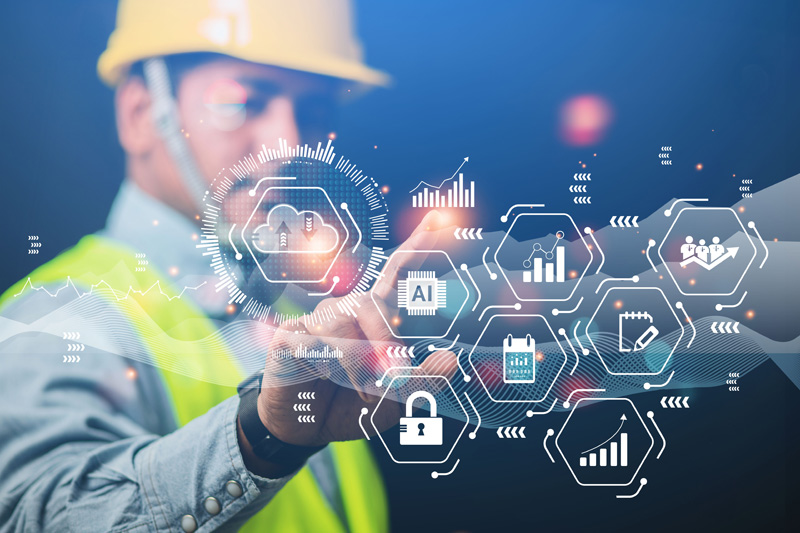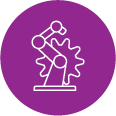in:sure är en forsknings- och utbildningsmiljö vid Tekniska högskolan i Jönköping som utvecklar kunskap och förmågor relevanta för övergången till en helt integrerad produktframtagningsprocess som stödjer resiliens och hållbarhet i framtida produkter och produktionssystem.
Digitalization for a Sustainable Built Environment
Digitsalisation not only facilitates the work for the construction sector, in several ways it can also contribute to the sectors sustainability.

Foto: Treecha/Adobe Stock
The digitalization of the construction sector is a slow, ongoing process that is needed, wanted, and supported by many organizations and companies, especially in Sweden. During the last decades, the process went through several stages that can be summarized as follows:

Strangely enough, today, even in Sweden, we find companies and organizations working at all stages, while the goal is to push the sector toward the highest level of digitalization.
The positive impact of digitalization on economic, environmental, and social sustainability has been proven by research. In fact, digitalization in the construction process can apport many benefits, a few of which are summarized below:
- Using software such as BIM makes planning and designing faster. Furthermore, currently available software for analysis and simulations enhances error detection that can be fixed in the early stages of the process enabling the saving of time and money in both the construction and operational phases.
- The possibility of analyzing the building's performance during the design stage facilitates the optimization process, allowing the designers to choose the best possible solution that satisfies several demands. This can be beneficial in cutting costs, decreasing CO2 emissions, and creating a better environment for the people who will leave the building as, for example, an ideal temperature, lighting, and ventilation can be designed and provided.
- Software for life cycle assessment, together with laws, regulations, guidelines, certification systems, etc. can facilitate the choice of materials, planning, and logistics, which are extremely important to reduce the environmental impact.
- Tools such as digital product passports (DPPs), a central part of my current research, can facilitate the digital information flow from the manufacturers to the other actors involved in the process, from designers to facility managers. DPPs can also take into account the whole life cycle of a product, facilitate its reuse, renovation, or disposal, and create more awareness among the users/customers which in turn will probably demand the manufacturers to transit toward a circular and more sustainable economy.
The journey toward a digitalized construction sector presents several obstacles as well as opportunities. Some of the obstacles to overcome are the need for investments, the necessity to educate new generations and ensure they can use and implement digital technologies, and the creation of new standards and laws that can facilitate the transition. However, the interest companies show in the topic, evident in their willingness to participate in our research projects for example, proves that the change is possible and that our work as researchers and collaboration with the companies will give the expected results sooner or later.
Author
- Docent ICT-BIM i byggandet
- Tekniska Högskolan
- annika.moscati@ju.se
- +46 36-10 1565
Detta är en bloggtext. Det är skribenten som står för åsikterna som förs fram i texten, inte Jönköping University.



